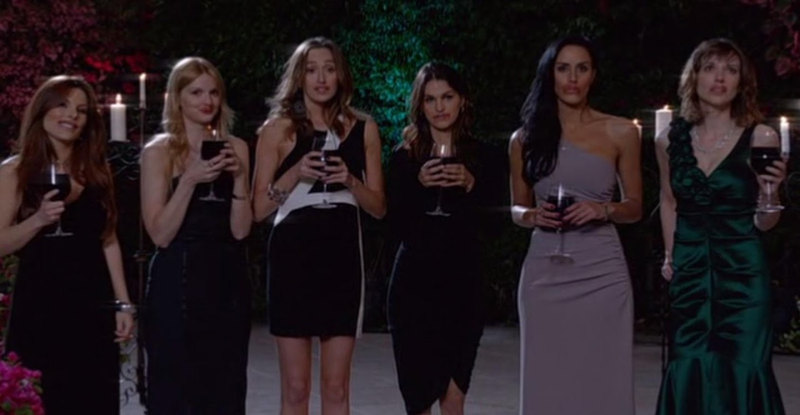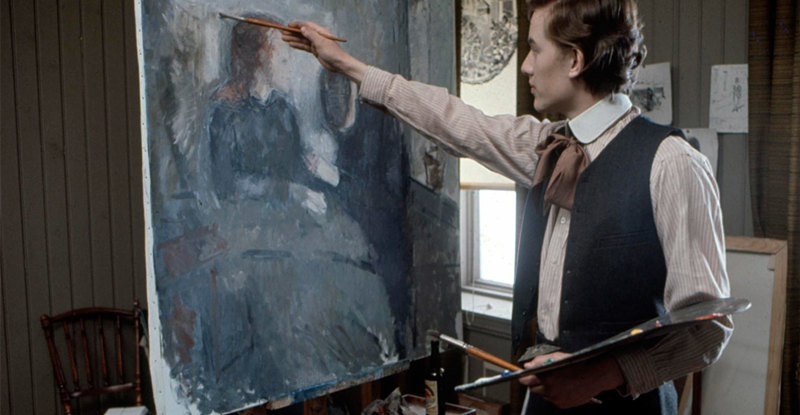The first fifteen minutes of “The Hidden Fortress” (1958) are as accomplished as anything in Akira Kurosawa’s body of work.
In the first shot we meet the peasants Tahei (Minoru Chiaki) and Matashichi (Kamatari Fujiwara) as they limp across a featureless plain, quarreling about which of them stinks the most. After a few minutes, a bloodied samurai suddenly stumbles into view and is quickly slaughtered by warriors on horseback as our friends cower at the edge of the battle. The riders leave as quickly as they came, but they are a reminder of the chaos that defines 16th century Japan, at least as interpreted by Kurosawa.
Tahei and Matashichi are quickly swept up in that chaos, conscripted by a warring clan and forced to dig for gold along with hundreds of fellow sufferers unfortunate enough to be born to a lower caste. But the action moves so rapidly that just one scene later the slaves stage a revolt. Armed only with clubs they face off against a platoon of soldiers wielding forged steel. The battle is epic with masses of human flesh surging up and down stone steps, killing and dying.
Our heroes (such as they are) are saved by their own cowardice and utter lack of significance. As they huddle helplessly off to the side, the armies pass them by and they are abruptly left alone once again. This first act starts with just these two men, sends hundreds of bodies hurtling through the frame in just a few minutes, and then ends with the same two men continuing their aimless wanderings as if nothing had happened. It’s a comic touch akin to Graham Chapman’s Brian falling off a Judean tower, landing in a space ship that soars into a battle among the stars, then being deposited neatly at the base of the same tower. Lucky bastards.
It’s a heck of a way to open, and the rest of the movie ain’t half-bad either. We haven’t even met Toshiro Mifune yet; his general Rokurota Makabe won’t show up until the twenty-minute mark though he gets a fantastic introduction, sighted dramatically in the distance with his arms folded as he observes the hapless commoners engaged in yet another petty squabble. It’s just one of many instances in which Kurosawa and cinematographer Ichio Yamazaki arrange crucial action in the background.
“The Hidden Fortress” was Kurosawa’s first wide-screen film (yay, Toho Scope!) and he not only explored the edges of the frame but also the full depth of field. This may have been his most dynamically staged film to that point in his career, and if you’ve ever wanted to marvel at the master’s easy command of the medium, you have dozens of scenes to choose from here. Some shots are held for a long time while other sequences are edited rapid fire, but the viewer is constantly reminded of the vast spaces in which much of the action takes place while still feeling intimately connected to the individual characters charting a path through this mishegoss.
The story almost feels incidental and is admittedly not the most profound or original effort. Mifune’s general is charged with spiriting his clan’s princess (Misa Uehara, making a distinct impression in shorts and knee socks) to safety through enemy lines along with the gold needed to rebuild the clan’s decimated forces. He tricks the peasants into helping with the promise (or tease) of said gold, knowing that their greed will keep them as loyal as need be. Things go wrong and then are made right, sometimes through implausible coincidences that might not bear scrutiny if you were the sort of person to scrutinize. But with such a breakneck pace, who has time to nitpick?
It’s an odd decision to tell this very busy story of great men and women primarily from the perspective of two such lowly characters, but Kurosawa was going for humor. After the massive success of “Seven Samurai” (1954), Kurosawa’s next three films had been relative duds at the box office (among them the brilliant “Throne of Blood”) and he wanted a light, accessible entertainment that would bring the crowds back. He succeeded, though it’s hard to say if the throngs showed up to enjoy the comic relief of Tahei and Matashichi, which admittedly grows tiresome when their cartoonish greed makes them do colossally stupid things, or to see another great Mifune hero and some raging action. Whatever the case, George Lucas was so enamored of the device that he “borrowed” it for “Star Wars,” so credit Kurosawa in part for R2D2 and C3PO (no word on whether he received a piece of the merchandising revenues). World cinema is an intricately woven tapestry, you see.
“The Hidden Fortress” may not inspire deep thoughts, but it’s a visual treat and an irresistible entertainment, one of Kurosawa’s most enjoyable movies.
Video:
The film is presented in its original 2.39:1 aspect ratio. “The Hidden Fortress” was originally released by Criterion on SD in 2001 and this 2014 Blu-ray update retains the same spine number (116). The original SD transfer showed plenty of signs of damage from its partially restored print though it wasn’t bad. The rough patches seemed acceptable back then, but we’ve gotten used to much stronger transfers in the ensuing decade plus, making this high-def upgrade a very welcome sight.
This is a dual-format release which means the package includes a single DVD and a single Blu-ray, each with the film and all extras. Just watching the DVD in this package, you can see the significant improvements with this new digital transfer. The improvement is, of course, more noticeable in 1080p. The high-def transfer shows a strong black-and-white contrast with a soft but deep grain structure and sharp image detail throughout. The film frequently stages action on multiple planes with tiny background figures being very important elements of the composition and the high-def image is essential to appreciate it all. Perhaps it’s not quite the same experience as seeing a pristine 35mm print, but it’s as close as most of us will ever get.
Audio:
Listeners can choose between the linear PCM Mono track or the optional 3.0 Perspecta soundtrack (a format used briefly in the mid-’50s). I’m not enough of an audiophile to tell you the difference between 3.0 Perspecta and a more typical DTS-HD Master Audio 5.1 soundtrack, but it’s nice to have the choice between mono and a stereo format. The soundtrack is clean with no evident distortion or damage though the music does sound rather tinny, perhaps a limitation of the source material available. Optional English subtitles support the Japanese audio.
Extras:
Criterion has added a few new extras for this 2014 release.
However, they have carried over from the old SD a 2001 interview with George Lucas (8 min.) in which he discusses the influence Kurosawa (and specifically “The Hidden Fortress”) have had on his work. He was friends with Kurosawa and has been quite open about what he borrowed for “Star Wars.”
Added for this release is yet another installment of the apparently infinite Toho Masterworks’ “Akira Kurosawa: It Is Wonderful to Create” series. This 41-minute episode of the 2003 series includes archival interviews with Kurosawa and other cast and crew members discussing the production of “The Hidden Fortress.” Nothing groundbreaking here, but still interesting.
Criterion has also included a new commentary track (recorded in 2013) by Criterion’s go-to Kurosawa scholar Stephen Prince, author of “The Warrior’s Camera: The Cinema of Akira Kurosawa.” I sampled the first half hour of the commentary in which Prince places a heavy emphasis on discusses Kurosawa’s adaption to wide-screen composition; he also suggests that the film’s most important influence was not on “Star Wars” but on the spaghetti Westerns of Sergio Leone, especially “The Good, the Bad, and the Ugly.”
We also get a lengthy Theatrical Trailer (4 min.)
The slim 12-page insert booklet includes an essay by film scholar Catherine Russell.
Film Value:
It may not be as weighty as “Ikiru” or as intricately plotted as “High and Low,” but “The Hidden Fortress” is an immaculately staged bit of escapist entertainment that should not get lost among Kurosawa’s more celebrated works. This high-def upgrade is a major improvement over Criterion’s SD release of more than a decade ago, and finally does justice to a beautiful film that’s loads of fun to watch.


